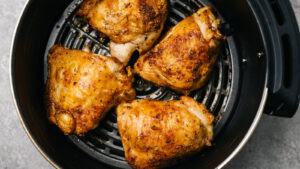Serving wine is an art that enhances the wine drinking experience, highlighting the flavors and aromas of the wine, and turning an ordinary meal into a memorable event. Whether you are a wine enthusiast or a beginner eager to learn more about wine culture, understanding the basics of how to serve wine can significantly enhance your appreciation of this timeless beverage.
This guide will cover the key aspects of serving wine, from temperature to glassware, ensuring you serve your wine perfectly every time.
Understanding Wine Serving Temperatures:
The temperature at which a wine is served can profoundly affect its taste and aroma. Serving wine at the correct temperature ensures that its flavors are well-balanced and fully expressed.
Red Wines: Serve slightly below room temperature, between 60°F to 68°F (15°C to 20°C).
Cooler temperatures tame the alcohol’s heat and allow the fruit flavors to shine.
White Wines: Serve chilled, between 49°F to 55°F (9°C to 13°C). The cooler temperatures highlight the acidity, freshness, and crisp flavors.
Rosé and Sparkling Wines: Serve well chilled, between 40°F to 50°F (4°C to 10°C), to preserve their freshness and lively effervescence.
Choosing the Right Glassware:
The shape of the wine glass can influence the wine tasting experience by directing the wine to the optimal part of the mouth.
Red Wine Glasses: Typically larger with a rounder bowl to allow the wine to come into contact with more air, enhancing its flavors and aromas.
White Wine Glasses: Generally smaller than red wine glasses, with a more U-shaped bowl, to concentrate the aromas and maintain a cooler temperature.
Sparkling Wine Glasses: Tall and thin (flutes) to preserve the carbonation and capture the flavor profiles of sparkling wines.
The Proper Way to Open a Bottle of Wine:
Opening a bottle of wine carefully is crucial to avoid cork fragments in your wine or spoiling the wine with an improper opening method.
Using a Corkscrew: Carefully insert the corkscrew into the center of the cork, twisting it downwards until you can gently lever the cork out of the bottle neck.
For Sparkling Wines: Chill the bottle first, then remove the foil and wire cage. Hold the cork and twist the bottle at its base to ease the cork out gently with a soft pop, controlling the release of pressure.
Decanting and Aeration:
Decanting is not just for older wines with sediment; it can also aerate younger wines, allowing them to breathe and open up.
Decanting: Pour the wine into a decanter slowly, stopping before any sediment enters the decanter. For older wines, decanting separates the wine from any sediment that may have formed.
Aeration: For younger wines, decanting or using an aerator can enhance the wine’s flavors and aromas by exposing it to air.
Serving the Wine:
Pour the wine into the glass by holding the bottle at the base or the neck. For red and white wines, fill the glass one-third full to allow room for swirling, which enhances the wine’s aromas. Sparkling wines can be poured more generously due to their narrow glasses.
Food Pairing:
Pairing wine with the right food can elevate the dining experience. Consider the intensity and flavors of both the wine and the dish. A general rule is to match the wine with the most dominant flavor in the meal. For example, a bold red pairs well with red meat, while a crisp white complements seafood or poultry.
Mastering the art of serving wine is a delightful journey that enhances your dining experience and deepens your appreciation for wine. By following these guidelines on temperature, glassware, opening methods, decanting, and serving, you’re well on your way to becoming proficient in the sophisticated art of wine service. Enjoy the journey, and remember, the best wine is the one shared with good company.
Storing Open Wine:
Properly storing open wine is essential to preserving its flavor and longevity. Once opened, wine begins to oxidize, which can quickly deteriorate its quality.
Red Wines: After opening, re-cork and store red wines in a cool, dark place. They can last 3-5 days if stored properly.
White and Rosé Wines: These should be re-corked and refrigerated immediately after opening. They typically can last 3-7 days in the refrigerator.
Sparkling Wines: Use a sparkling wine stopper to reseal the bottle and refrigerate. Sparkling wines can last 1-3 days with minimal loss of effervescence.
Mindful Pouring and Consumption:
Wine serving is not just about the technical aspects; it’s also about creating an atmosphere and being mindful of your guests’ experiences.
Respect Preferences: Always consider the preferences of your guests. Some might prefer their wine slightly warmer or cooler than the recommended serving temperatures.
Pouring Etiquette: Serve women and older guests first, moving clockwise around the table.
When pouring, ensure the label is facing the guest, adding a touch of professionalism to your service.
Moderation: While wine is to be enjoyed, it’s important to serve and consume it in moderation.
This ensures everyone can appreciate the wine and the occasion without overindulgence.
Exploring and Learning:
Part of the joy of serving wine is learning about the vast world of wines available. Each bottle has its own story, from the grape variety and winemaking process to the region it comes from.
Experiment: Don’t be afraid to try new wines and serving methods. Experimenting with different temperatures, glassware, and pairings can lead to delightful discoveries.
Education: Take opportunities to learn more about wine through tasting events, courses, or by simply talking to winemakers and sommeliers. The more you learn, the more confident you’ll become in serving wine.
Creating an Atmosphere:
The setting in which you serve wine can significantly affect the overall experience. Attention to detail in the ambiance can make even a simple wine tasting feel special.
Lighting and Music: Soft lighting and pleasant music can enhance the mood and make your guests feel more relaxed and receptive to the wine tasting experience.
Table Setting: A well-set table with clean, appropriate glassware and perhaps a few decorative elements can elevate the occasion, showing your guests the care and thought you’ve put into the event.
Serving wine is a multifaceted art that goes beyond just pouring a drink into a glass. It encompasses understanding the wine itself, how to present and preserve it, and how to create an enjoyable experience for your guests. By mastering these elements, you transform wine serving from a mere act into an expression of hospitality and a celebration of the rich culture surrounding wine. Whether you’re a seasoned wine aficionado or new to the world of wine, each bottle presents an opportunity to explore, learn, and share with others. Cheers to your journey in the art of serving wine!




